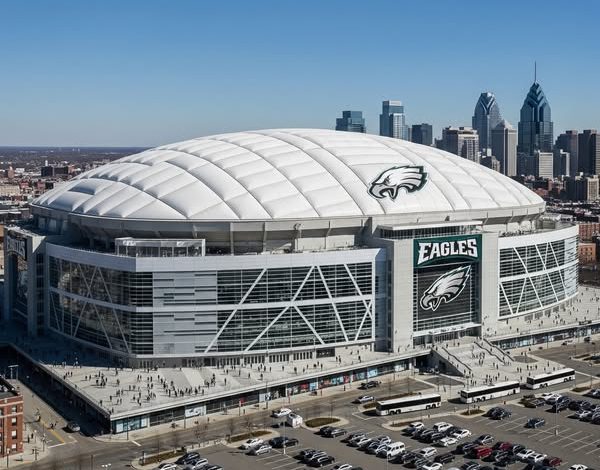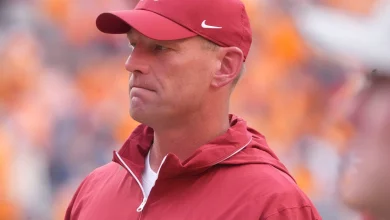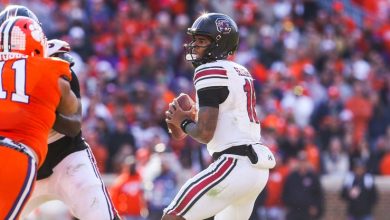Building New Eagles Stadium at Former Franklin Mills Mall Now Philadelphia Mills Offers Better Access, Space for Development, Job Creation, and Suburban Game-Day Experience for Fans

The Philadelphia Eagles have long stood as one of the NFL’s most passionate and storied franchises, rooted in tradition, toughness, and an unwavering fan base. Their current home, Lincoln Financial Field, affectionately known as “The Linc,” has served the team well since opening in 2003. But as the NFL continues to evolve—and stadiums increasingly become multi-functional centers of entertainment and economic activity—a bold new opportunity is emerging: building a new Eagles stadium at the site of the former Franklin Mills Mall, now called Philadelphia Mills.
This site, located in Northeast Philadelphia, offers several distinct advantages over the current stadium location in South Philadelphia. From superior transportation access and existing parking infrastructure to large-scale redevelopment potential and economic revitalization, the former Franklin Mills Mall site checks many boxes. Perhaps most significantly, it opens the door to a more suburban-friendly game-day experience, one that could attract broader regional interest while helping reshape the city’s future.
Superior Accessibility via Highways and Transit Links
One of the greatest advantages of relocating to the Philadelphia Mills site lies in its prime accessibility. The location sits just minutes from several major highways, including Interstate 95, the Pennsylvania Turnpike (I-276), and Route 63 (Woodhaven Road). This makes it far more accessible to fans traveling from various parts of the region, including Bucks County, Montgomery County, South Jersey, and even areas farther north in Pennsylvania.
The South Philadelphia sports complex, while iconic, is often gridlocked on game days. Congestion, limited access roads, and urban density create challenges for fans coming to Eagles games, concerts, and other events. By contrast, the former Franklin Mills site already functions as a high-traffic retail center and is better equipped to handle large influxes of visitors via automobile.
In addition to highway access, the area is already served by public transit and could be enhanced with dedicated shuttles or extended SEPTA routes to accommodate football crowds. With strategic investment and cooperation between the city and the Eagles, transit solutions could be scaled up without the logistical headaches of disrupting an already-dense urban neighborhood.
Existing Parking Infrastructure and Tailgating Potential
Another key advantage is the availability of significant surface-level parking at the Philadelphia Mills location. The former mall was built with the ability to host thousands of cars simultaneously, and those vast lots remain largely intact today. This infrastructure could immediately reduce construction costs and provide a smooth transition into a stadium-centric footprint.
Importantly, the large open areas also allow for tailgating, an essential element of the Eagles fan experience. In South Philadelphia, tailgating is a tightly regulated and sometimes restricted activity due to space and neighborhood concerns. At Philadelphia Mills, fans could enjoy more expansive, less regulated pre-game festivities, reinforcing the team’s identity and traditions in a more comfortable, fan-centric environment.
Additionally, the potential for custom-designed parking and tailgating lots would allow for upgraded amenities such as mobile food vendors, concert stages, fan zones, and family-friendly entertainment—all contributing to a more immersive game-day atmosphere.
Ample Space for Modern Stadium and Mixed-Use Development
Modern stadiums are no longer just football fields—they are destination hubs. SoFi Stadium in Los Angeles, Allegiant Stadium in Las Vegas, and even MetLife Stadium in New Jersey offer far more than seating and concessions. They are integrated with hotels, shops, restaurants, museums, and even apartments, creating multi-functional revenue streams that serve both the team and the community.
The Philadelphia Mills site offers something South Philly cannot: an abundance of space. The relatively flat and underutilized commercial land provides a blank canvas for a state-of-the-art stadium complex that could include:
-
A new 70,000+ seat stadium
-
On-site hotel or conference center
-
Shopping and dining district with Eagles branding
-
A sports museum or Eagles Hall of Fame
-
Public plazas, parks, or green spaces
-
Entertainment facilities like a movie theater or live music venue
-
Youth sports fields or training facilities to connect with local communities
By turning the area into a year-round entertainment and leisure destination, the Eagles could capitalize on their massive following and diversify their business model. This approach wouldn’t just enhance game-day—it would generate daily foot traffic and recurring revenue through non-football events like concerts, esports, and conventions.
Economic Revitalization for Northeast Philadelphia
Perhaps one of the most important impacts of a stadium move would be the economic transformation it could bring to Northeast Philadelphia.
The Franklin Mills Mall, opened in 1989, was once a top-tier retail destination. However, like many American malls, it has suffered under the weight of e-commerce, shifting consumer habits, and competition from lifestyle centers and Amazon. While Philadelphia Mills remains operational with a mix of outlet stores and discount retailers, it is no longer the economic engine it once was.
A new stadium would reverse that decline. It would:
-
Create thousands of construction jobs in the short term
-
Offer long-term employment in retail, hospitality, operations, and public safety
-
Generate millions in tax revenue through sales, income, and property taxes
-
Attract new business investment in surrounding areas including food service, lodging, and entertainment
-
Boost real estate value in surrounding neighborhoods
Moreover, the city could pursue public-private partnerships to improve local infrastructure, public transit, and public spaces—projects that benefit both fans and local residents. In many ways, this type of revitalization project mirrors what happened in Inglewood, California, where SoFi Stadium helped transform a struggling part of Los Angeles into a thriving hub of activity and investment.
Broader Fan Base and Suburban Appeal
While Philadelphia remains a deeply loyal sports city, the demographics and preferences of fans are evolving. Suburban families, corporate clients, and younger fans increasingly value comfort, convenience, and safety—qualities that are sometimes hard to guarantee in dense urban stadiums.
By moving to a location like Philadelphia Mills, the Eagles could cater to a wider regional audience, making game day more accessible to fans from outside the city limits. The suburban-style setup with easier parking, enhanced safety features, and more family-friendly entertainment options would broaden the franchise’s appeal without alienating the passionate core of Philly fans.
The new stadium could include features such as:
-
Climate-controlled suites and club lounges
-
Interactive fan experiences for kids
-
Affordable family packages
-
Green spaces and walking paths
-
Enhanced ADA and senior accessibility
In doing so, the Eagles wouldn’t just modernize their stadium—they’d modernize the fan experience and position themselves as leaders in the future of NFL entertainment.
Potential Challenges and Community Concerns
Of course, no large-scale development project is without challenges. Moving the stadium away from South Philadelphia could be controversial. Longtime fans have grown up with the Linc, Veterans Stadium, and the overall South Philly sports scene as central to their identity. Emotional ties to the current stadium should not be underestimated.
There are also logistical and financial concerns:
-
Who will fund the stadium—public money, private investment, or both?
-
What kind of zoning, environmental, or legal hurdles must be cleared?
-
How will traffic patterns be managed in Northeast Philly?
-
Will the new project displace existing businesses or residents?
The key to overcoming these challenges lies in transparency, community engagement, and visionary planning. By involving local residents in the process and offering real, lasting benefits to surrounding neighborhoods, the project could build consensus and support.
Additionally, the Eagles could honor their history by preserving elements of the Linc, perhaps through relocated monuments, hall of fame exhibits, or public art celebrating moments like Super Bowl LII.
The Future of Eagles Football: A Bold Opportunity
As NFL franchises look toward the next generation of fan engagement and venue innovation, the Philadelphia Eagles have a rare opportunity to lead by example. The potential to build a new stadium at the former Franklin Mills Mall site offers more than just bricks and mortar—it presents a chance to redefine how Philadelphia experiences football.
With better access, more space, enhanced economic impact, and broader regional appeal, Philadelphia Mills could become the next great sports destination in America. It’s not just a change of address—it’s a vision of the future.
While the move would take time, resources, and a willingness to embrace change, the potential upside is clear. The Eagles, always proud of their gritty legacy, could soar even higher by investing in a space that reflects their ambition, fan passion, and the city’s evolution.
After all, what better way to fly into the future than by building a new nest in a place where possibility meets purpose?









